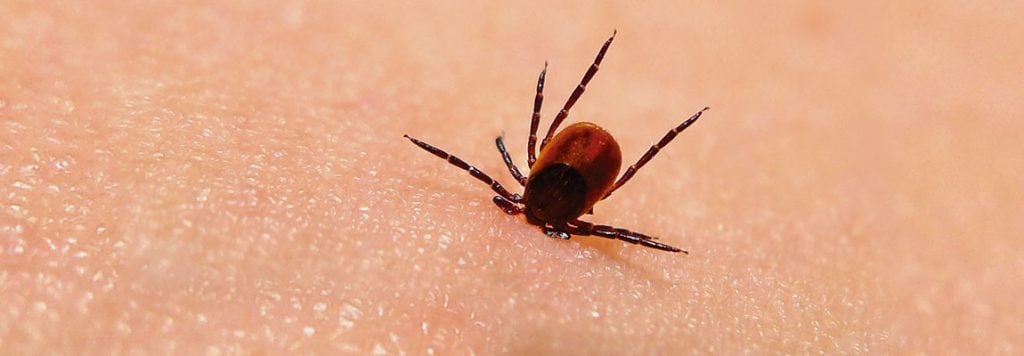Did you know that May is Lyme Disease Awareness Month?
The arrival of spring means we need to start being careful outside—in more places than ever.
A growing number of individuals, groups, and organizations throughout the United States use Lyme Disease Awareness month as an opportunity to organize events to help educate the public and/or raise funds for research. Events have included:
- Screenings of the Academy Award semifinalist Lyme documentary Under Our Skin, which brought unprecedented awareness to the shocking story of Lyme disease.
- The sequel Under Our Skin 2, Emergence, Gold Award Winner, National Health Information Association, which investigates the deepening Lyme disease crisis and follows its casualties and controversies.
- Niagara Falls lights up and Goes Green for Lyme Awareness Month in May.

Did you know that Lyme disease is more prevalent than HIV and breast cancer combined?
Did you know that the Center for Disease Control (CDC) has upped its estimate of annual cases by ten times, making Lyme disease more prevalent than HIV and Breast Cancer combined?
New York State accounts for nearly 1/3 of the nation’s Lyme disease cases
The Carey Institute reports that the Hudson Valley of New York has the highest rates of Lyme disease in the United States. More than half the cases diagnosed since 2000 have been in just five counties: Dutchess, Columbia, Orange, Suffolk, and Ulster. Dutchess County had the highest number of reported cases of Lyme disease from 2000-2014.
Lyme disease: Dutchess County leads the nation in cases
According to the Center for Disease Control and Prevention (CDC), with over 329,000 new cases of Lyme Disease in the each year, Lyme’s is one of the fastest growing infectious diseases in the United States, especially in our area.
The mid-Hudson Valley has among the nation’s highest rates of the tick-borne illness. The latest national figures from 2000 to 2014 show that five local counties place in the top 10 per capital.
- Dutchess = 11,660 new cases
- Columbia= 6,586 new cases
- Orange= 6,094 new cases
- Suffolk= 5,277 new cases
- Ulster= 4,857 new cases
Insurance data shows that among Lyme sufferers were a significant share of children. Infection is most common among children aged 5–15 years and adults aged 40–60 years.
As Lyme spreads nationwide, New York counties likely will lose their unwelcome distinction at the top of the U.S. county rate list. But the changed ranking may be unrelated to disease incidence.
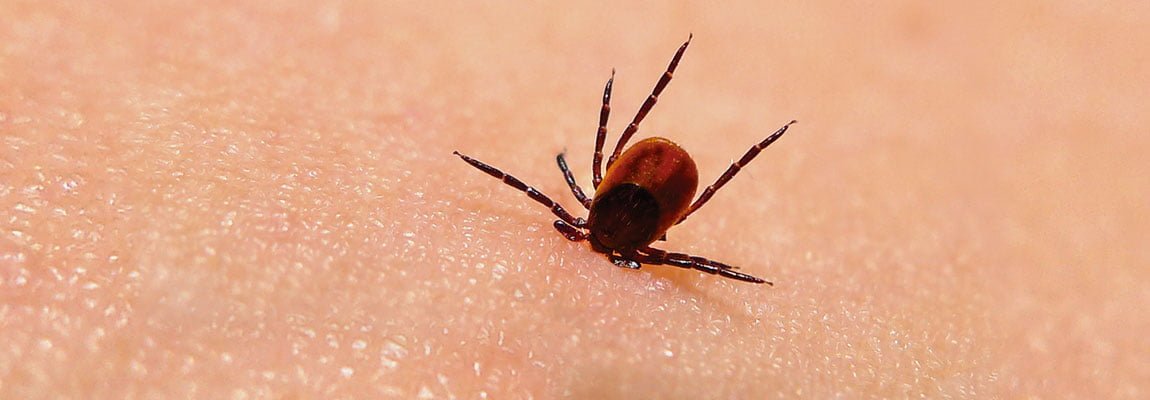
Early Lyme Symptoms
Lyme disease is an infection caused by the bacteria called Borrelia burgdorferi (Bb) and transmitted by infected black-legged tick bites. There are significant populations of Borrelia-carrying ticks in many parts of the Hudson Valley. Currently, there is no human vaccine available. A recent John Hopkins study estimates that tick-borne illnesses cost the U.S. healthcare system up to $1.3 billion annually. Prevention and early detection is the key.
Ticks become infected with the Lyme bacterium by feeding on the blood of infected mice, birds, and deer. Early treatment of Lyme disease is critical, however, because symptoms vary from person to person Lyme is very difficult to diagnose. There are over 100 known symptoms of Lyme disease. Symptoms usually develops about 1 – 2 weeks after the bite, although it may appear as soon as 3 days or as long as months to years. Antibiotic treatment for early symptoms is usually very effective. If Lyme disease is not treated, more severe symptoms and complications can occur.
Early symptoms may include:
- Flu-like symptoms such as fatigue, fever, chills, headaches, joint pain, urologic symptoms, or heart problems
- Possible “bulls-eye rash” scientifically known as Erythema migraines (EM)
- Joint pain and inflammation can arise at the same time as the skin rash
Advanced Lyme Symptoms
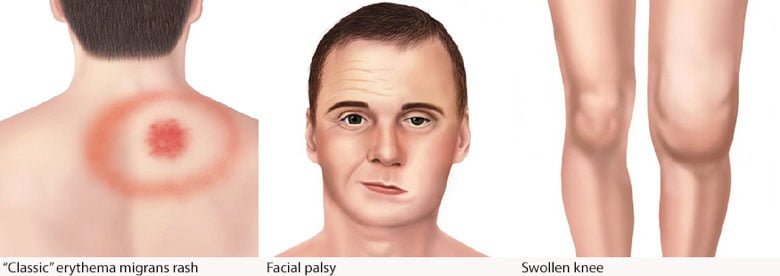
If left untreated, Lyme Disease can cause serious health problems. Often called “chronic Lyme disease,” this condition is properly known as “Post-treatment Lyme Disease Syndrome” (PTLDS). Most medical experts believe that the ongoing symptoms are the result of damage to tissues and the immune system that occurred during the infection.Usually treated by antibiotics prolonged treatment can cause complications. Most people get better with time but it can take up to several months to feel well.
Usually treated by antibiotics prolonged treatment can cause complications. Most people get better with time but it can take up to several months to feel well.
- Lyme arthritis, chronic joint inflammation
- Persistent fatigue
- Mood disorders
- Facial / Bell’s palsy
- Memory loss
- Dizziness
- Change in heart rate
Prevention is KEY
Bite back for a cure – Protect yourself, Protect your pets, Protect your yard
According to the Albany County health department, 40-50% of ticks collected and tested in Central New York carry the Lyme disease bacterium. Tick bites are painless and ticks are so small that their bites often go unnoticed. Checking for ticks should be done daily, especially when coming in from outside areas where you may have encountered ticks. There are many good tips to avoid these pests.
- Avoid wooded and brushy areas with high grass and leaf litter.
- If hiking, walk in the center of trails
- Wear light-colored clothing, long sleeves and pants, tuck pants into socks.
- Use repellents that contain 20 to 30% DEET on exposed skin and clothing for protection.
- Bathe or shower as soon as possible after coming indoors to wash off and more easily find ticks.
- Examine gear and pets. Ticks enter the home by way of clothing and pets, and then attach to a person later.
- If not washing your clothes right away, tumble dry clothes on high heat for an hour to kill remaining ticks.
Do a Tick Check. Is there a tick on you?
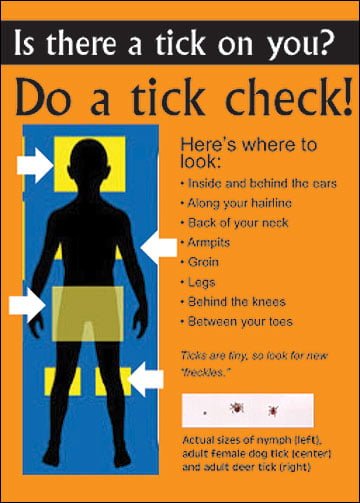
To prevent possible infection with a tick-borne illness, check for ticks within 24 hours of being in areas of tick activity. Remember, ticks are tiny, so look for the “freckles”. Perform a full-body tick check using a hand-held or full-length mirror to view all parts of your body especially under the arms, in and around the ears, inside the belly button, behind the knees, between the legs, around the waist, and in the hair. Here’s where to look:
- Inside and behind the ears
- Along your hairline
- Back of your neck
- Armpits
- Groin
- Legs
- Behind the knees
- Between your toes
Tick Identification Chart
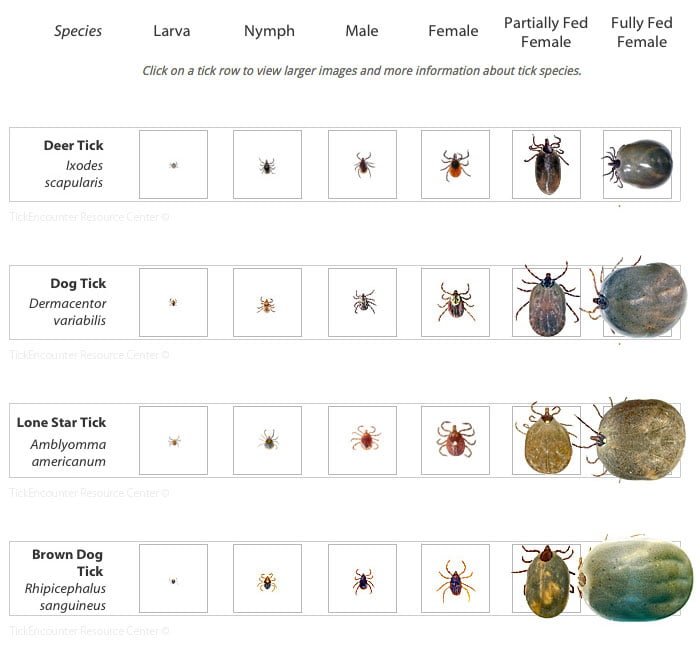
Create a Tick-Safe Zone Through Landscaping
Ticks love wooded and humid areas. The northeast is the perfect environment for them. They are mostly found in overgrown places where the ground is covered with leaves, high grass, and weeds. Ticks can’t fly or jump. Instead, they wait for a host, resting on the tips of grasses and shrubs in a position known as “questing”. Ticks are abundant in the area that surrounds your lawn area from your woods. These are the same areas where deer and mice live. This is why ticks are found on well-mowed lawns or in your home. They are dropped off by animals and pets that enter these areas.
Red Cedar’s trained technicians understand tick habits and the treatment methods available to help reduce or minimize risk of contact with ticks and prevent an infestation. Red Cedar also knows how to create and manage landscapes that are less susceptible to tick infestations.
CDC’s Landscaping Recommendations for a Tick Free Yard
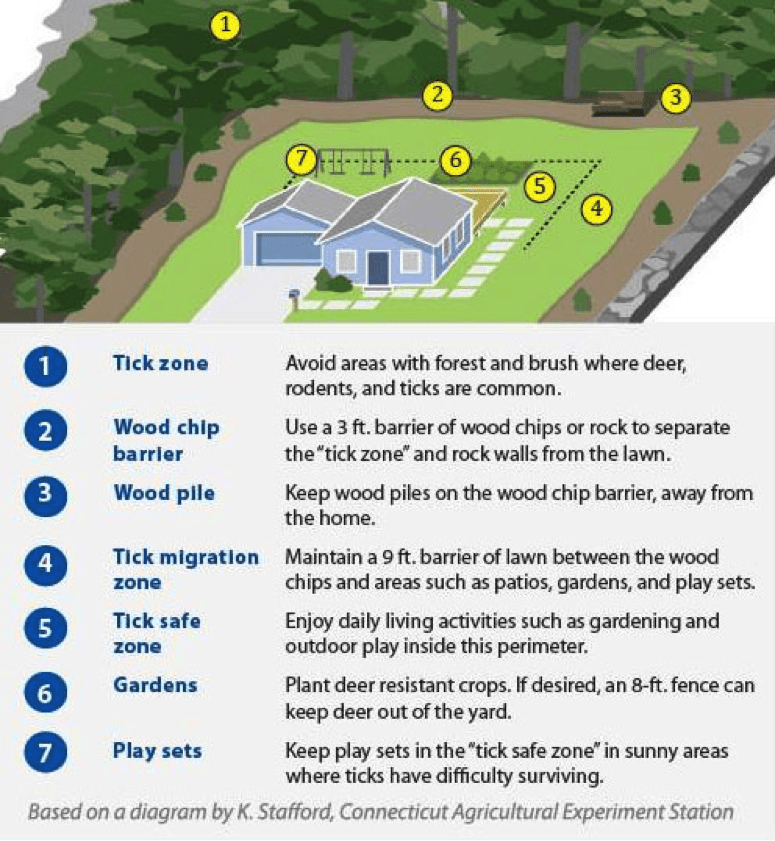
Apply Pesticides Outdoors to Control Ticks
The Center for Disease Control suggests the use of acaricides (tick pesticides) can reduce the number of ticks in the treated areas of your yard. However, you should not rely on spraying to reduce your risk of infection. They also advise using a professional pesticide company to apply pesticides at your home. Call Red Cedar for a free yard treatment evaluation.
Typically 2 sprays a year (mid-May and mid-June when new larval and nymph ticks are emerging) are enough, but a 3rd application in October may be needed to reduce adult ticks. The spray is generally only applied along the perimeter of your yard, shady perennial beds, or along wooded trails. After an inspection of the property, Red Cedar will treat as necessary to help homeowners protect their houses, family, and pets.


